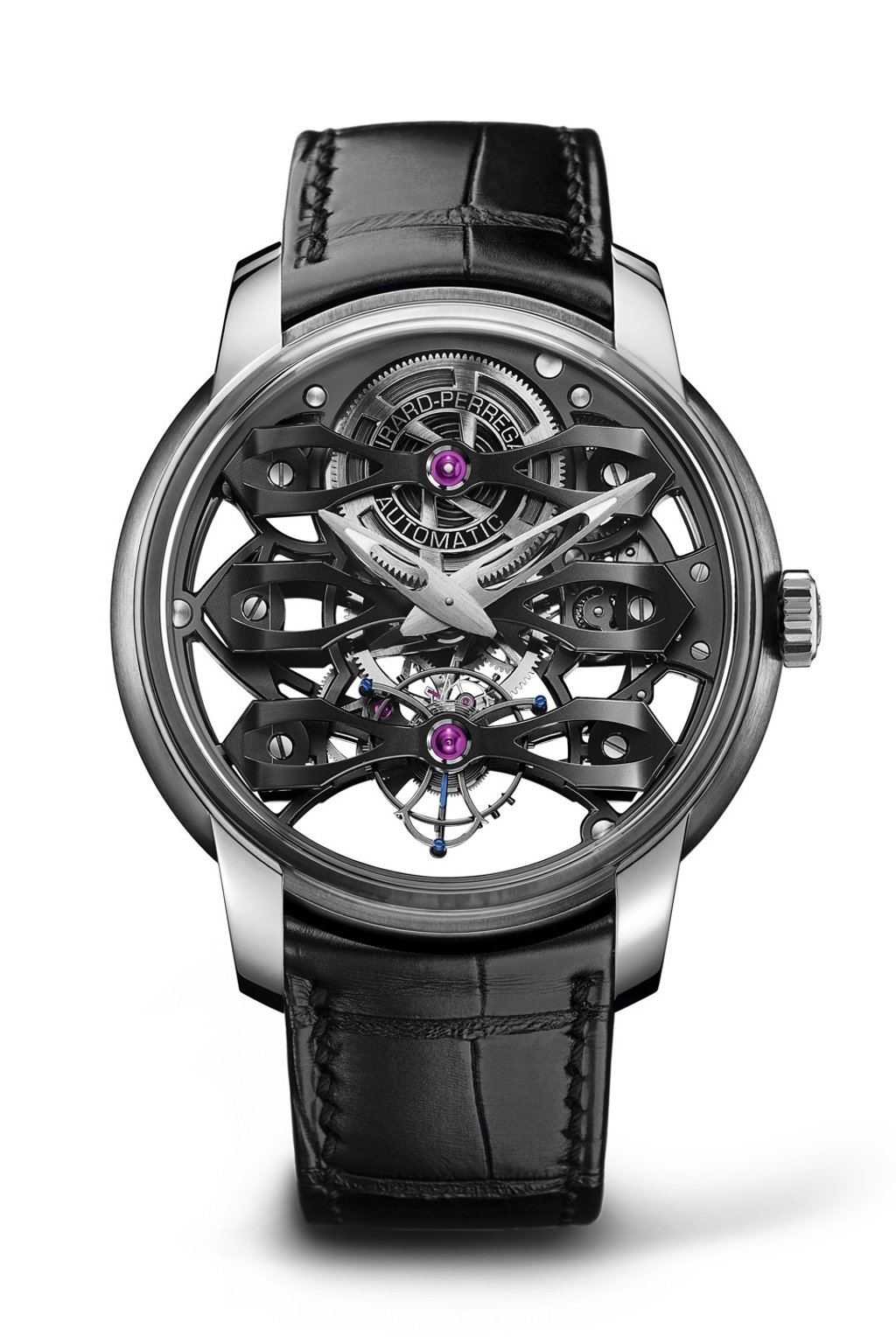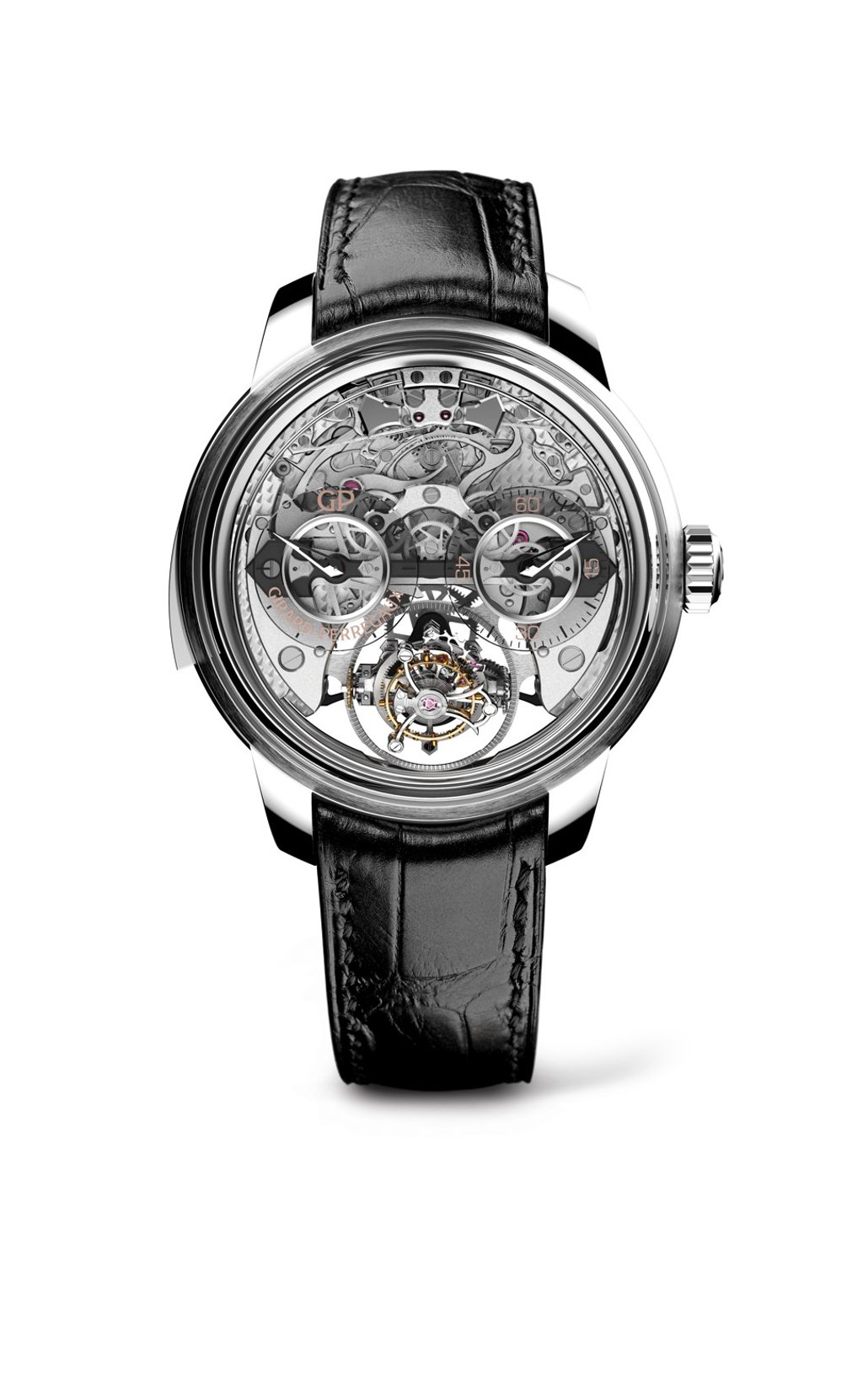Girard Perregaux's new tourbillon collection is fit for the 21st century

Maison releases Neo Tourbillon with Three Bridges Skeleton, Minute Repeater Tri-Axial Tourbillon and Classic Bridges models
For a watchmaker whose history dates back to 1791, Girard-Perregaux shows a remarkable ability to keep up with the times. “The tourbillon with three gold bridges” movement was submitted to the US Patent Office in 1884 by Constant Girard and it was awarded a gold medal at the Universal Exposition of Paris five years later. The Bridges collection has evolved over the centuries, and the latest models seen at SIHH 2018 look fit for the 21st century.

A satin-brushed, bezel-free 45mm diameter titanium case that is 15.85mm high works as the frame of the domed sapphire glass windows, on the front and back, providing views of the criss-crossed slender black and finely rounded bridges as well as the incredibly thin movement. Inside the GP 9400-0011 is a reinterpretation of Calibre 9400, looking like it was suspended inside two layers of air.
The movement baseplate is replaced by two bridges, made of titanium, sandblasted and then blackened by a PVD process. The latter are identical to those on the dial side: a first in a structure based on visible bridges. They are counterparts of the gear-train bridge in the centre and the tourbillon bridge at 6 o’clock. Their interior angles, arches, extensions and overhangs make them works of art in their own right.
The watch is also a technical marvel. The high inertia of the white gold micro rotor ensures a minimum 60-hour power reserve, while the Girard-Perregaux tourbillon, consisting of 80 components in titanium, spins on its axis once a minute. The entire fully assembled carriage weighs just 0.25 grams.

Like the Neo Tourbillon with Three Bridges, this model has also dispensed with a dial and uses two concave box-type sapphire crystals to showcase the heart of the 37.50mm diameter movement, reference GP09560-0001.
To guarantee timekeeping precision, the Repeater’s 1.24-gram tourbillon made of 140 parts has been designed to spin on three different axes at varying speeds: a first rotation in two minutes, a second in one minute and a third in 30 seconds, enabling the flaws in equilibrium to occupy all points on this sphere within a short time to cancel each other out and more effectively mitigate the effects of gravity.
